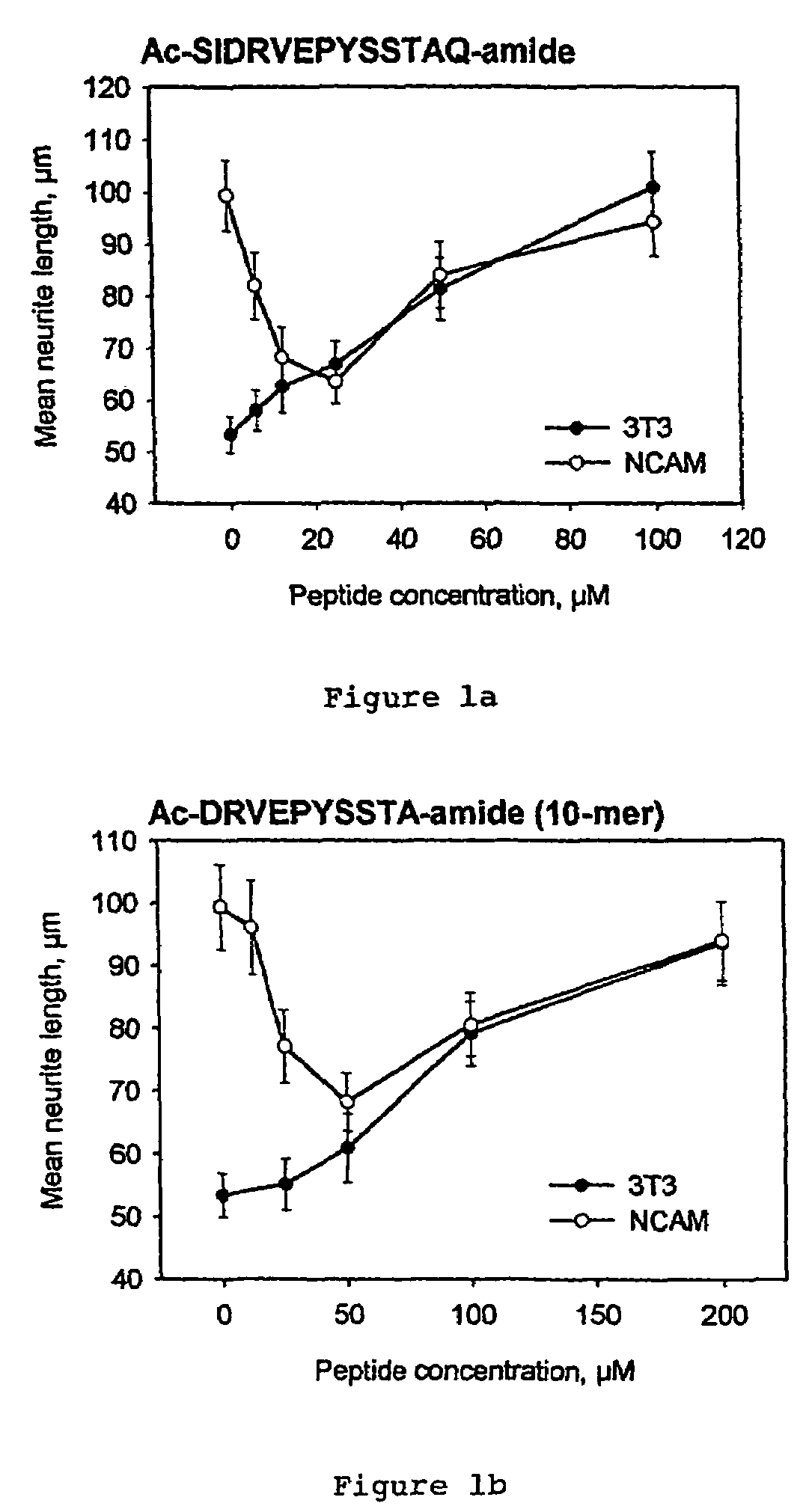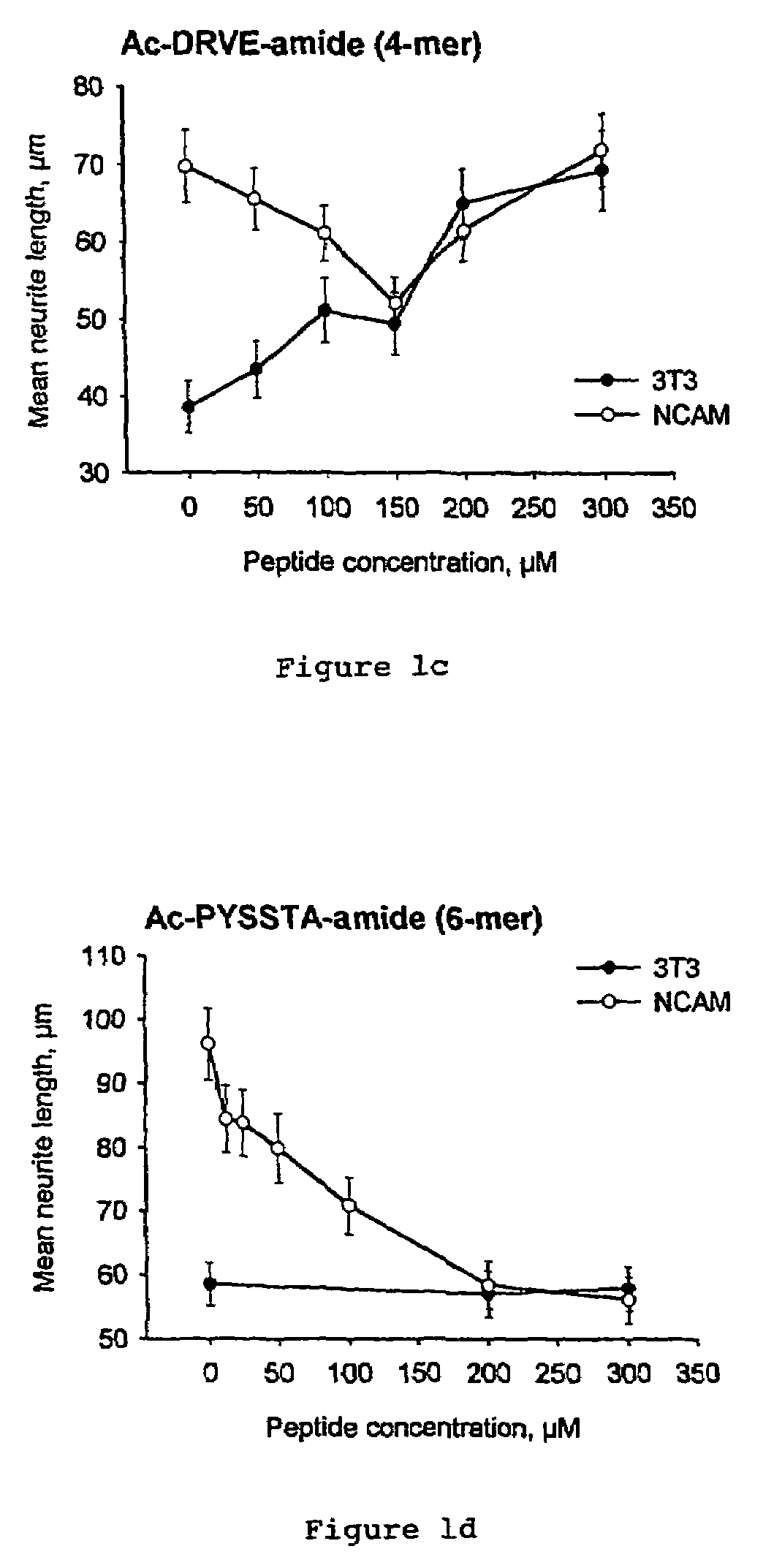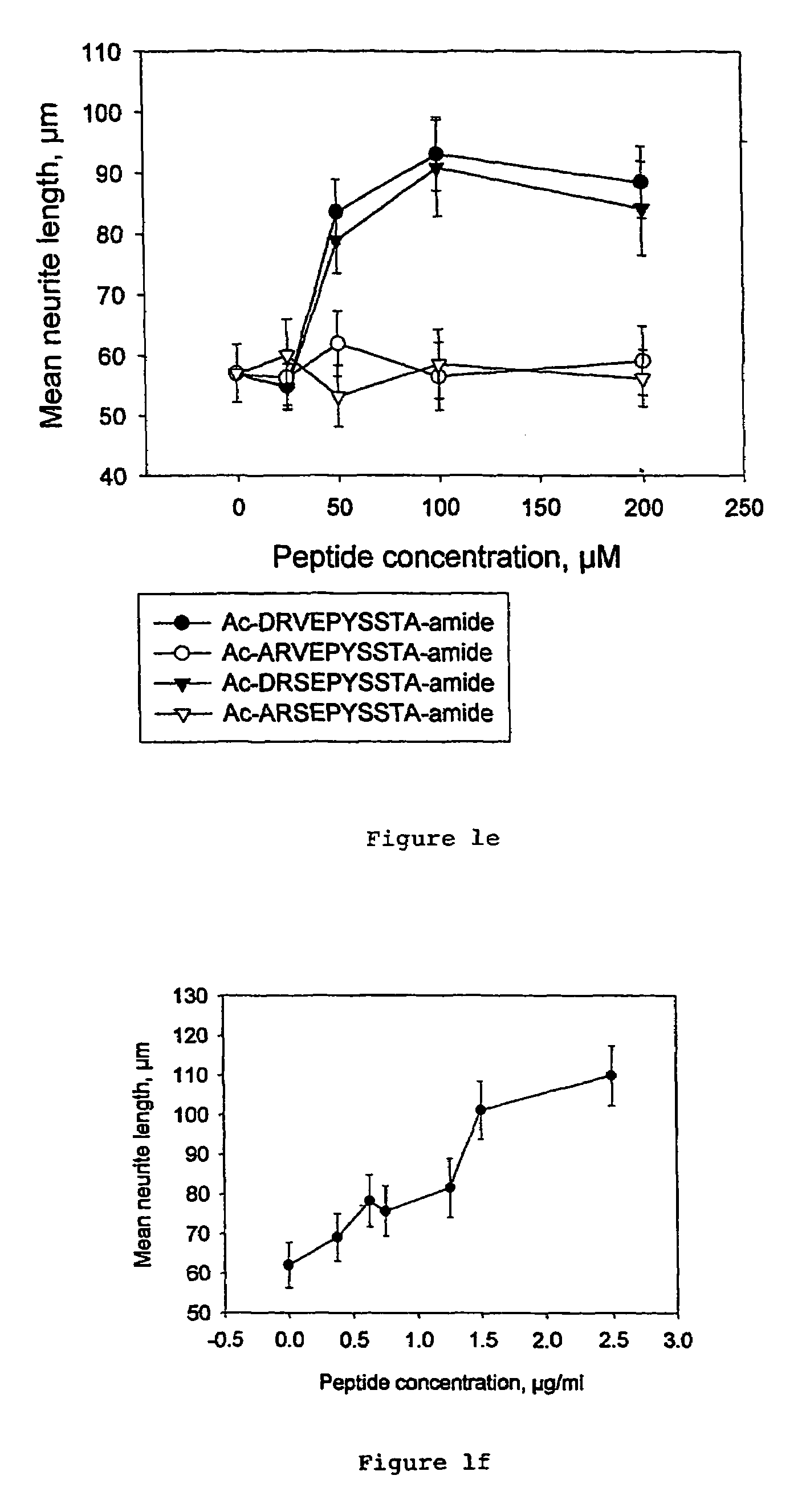Peptides that stimulate cell survival and axon regeneration
a technology of axon regeneration and peptides, which is applied in the direction of peptide/protein ingredients, peptide sources, angiogenin, etc., can solve the problems of stimulating tumour formation and disappointing clinical improvement results of the above-mentioned materials, and achieves stable and easy storage, less prone to injury, and cheap and easy to produce in quantity.
- Summary
- Abstract
- Description
- Claims
- Application Information
AI Technical Summary
Benefits of technology
Problems solved by technology
Method used
Image
Examples
example 1
General Methods for the Production of Peptides
[0130]Peptides are prepared by solid phase synthesis using standard Fmoc chemistry. This is based on sequential addition of amino acid residues, the α-amino and side chain amino groups of which are protected by a Fmoc group, to the amino group of a linker attached to an insoluble resin support. After removal of the protecting group from the amino acid at the end of the growing chain using piperidine, the next protected amino acid is added, giving a peptide attached through its carboxy terminus to the resin via a linker. This procedure is repeated until the final product has been assembled. The product is then removed from the resin using trifluoroacetic acid.
[0131]To produce peptides having a C-terminal amide group, methylbenzhdrylamine is used and for peptides having a free (unblocked) carboxy terminus traditional Merrifield resins are used. Acetylation of the N-terminus for blocked peptides is perfomed by reacting the peptide resin wit...
example 2
Production of Peptide A(d)
[0136]Peptide A(d) has the structure [{Ac-DRVEPYSSSTA}2-K]2-K-OH, that is to say, four units of the acetylated peptide DRVEPYSSTA [SEQ.ID.NO.:14] are linked to a branched lysine tetramer backbone structure. The branched lysine backbone structure is prepared as described in Example 1 above. Peptide A(d) is also referred to herein as Ac-DRVEPYSSSTA[lys]2[lys].
[0137]The F-moc protective groups are removed from the four lysine amino groups of the backbone structure, then alanine is added followed by threonine, serine, serine, tyrosine, proline, glutamic acid, valine, arginine, and aspartic acid.
example 3
Production of Cyclic Peptide
[0138]The linear peptides DRVEPYSSTA [SEQ.ID.NO:14] is synthesised as described above may be prepared but with a cysteine residues flanking each end of the peptide sequence, giving the peptide CDRVEPYSSTAC [SEQ.ID.NO.:18]. The cysteine is coupled first to the resin followed by the other amino acids and finally by a cysteine at the N-terminus. The linear peptide is then cyclised by reacting the two side chain thiol groups with a 10% solution of iodine in methanol to form a disulphide bridge.
PUM
| Property | Measurement | Unit |
|---|---|---|
| Molar density | aaaaa | aaaaa |
| Molar density | aaaaa | aaaaa |
| Molar density | aaaaa | aaaaa |
Abstract
Description
Claims
Application Information
 Login to View More
Login to View More - R&D
- Intellectual Property
- Life Sciences
- Materials
- Tech Scout
- Unparalleled Data Quality
- Higher Quality Content
- 60% Fewer Hallucinations
Browse by: Latest US Patents, China's latest patents, Technical Efficacy Thesaurus, Application Domain, Technology Topic, Popular Technical Reports.
© 2025 PatSnap. All rights reserved.Legal|Privacy policy|Modern Slavery Act Transparency Statement|Sitemap|About US| Contact US: help@patsnap.com



